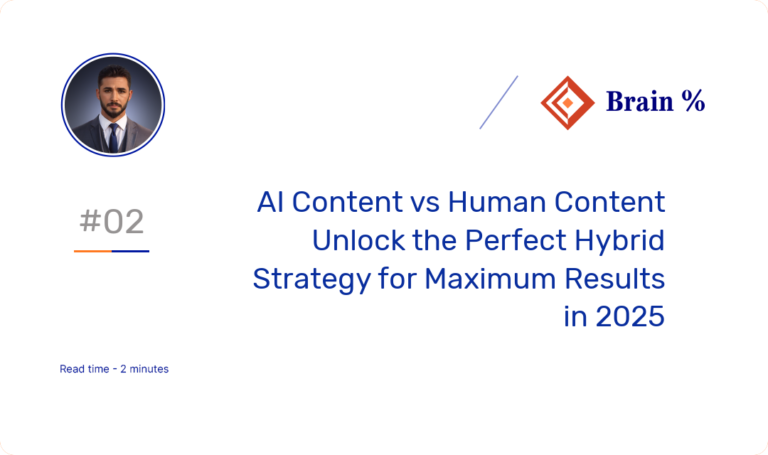Introduction: Why Topic Clusters are Essential for SEO Success
In today’s digital landscape, marketing directors face an unprecedented challenge: Digital Scale Paralysis. The sheer volume of content required to maintain competitive visibility has overwhelmed traditional content creation approaches, leaving many businesses struggling to keep pace.
Topic clusters SEO emerges as a game-changing framework, transforming how organizations approach content strategy and digital presence.
This framework delivers superior results through:
• Strategic content organization and hierarchy
• Enhanced semantic relationships between related content
• Improved search engine visibility and recognition
• Scalable content creation and management
• Stronger topical authority building
As we move into 2025, AI-powered solutions are revolutionizing how we implement and optimize topic clusters. By leveraging advanced algorithms for content hierarchy strategy and semantic search optimization, businesses can now scale their content operations without sacrificing quality or exhausting resources.
Understanding the Core Components of a Topic Cluster Strategy

Topic cluster SEO success hinges on understanding and implementing four essential components that work together to create a powerful content ecosystem. At its foundation lies the pillar content, which serves as a comprehensive guide that covers your main topic broadly yet authoritatively. This cornerstone piece typically spans 3,000+ words and establishes your domain expertise.
The four core components of topic clusters include:
- Pillar Content: Comprehensive cornerstone content that broadly covers the main topic
- Supporting Cluster Content: In-depth articles exploring specific subtopics
- Content Hub Organization: Systematic framework for content hierarchy and relationships
- Semantic Keyword Relationships: Interconnected terms mapping user intent and context
Supporting cluster content forms the next critical layer, consisting of in-depth articles that explore specific aspects of your main topic. These detailed pieces connect back to your pillar page through strategic internal linking, creating a content silo that search engines can easily understand and navigate.
Content hub organization represents the architectural framework that holds your topic clusters together. This systematic approach to content hierarchy ensures that your pillar pages and cluster content work in harmony, enhancing your site’s semantic SEO performance. By implementing proper content hub structures, you create clear pathways for both users and search engines.
Key benefits of semantic keyword relationships:
• Enhanced topical authority through interconnected terms
• Better alignment with user search intent
• Comprehensive coverage of related concepts
• Improved contextual relevance for search engines
• Stronger overall content ecosystem performance
Step-by-Step Guide to Building Effective Topic Clusters
Building effective topic clusters requires a systematic approach that combines strategic planning with AI-powered implementation. The framework begins with comprehensive topic identification, utilizing advanced semantic search optimization to identify core themes and related subtopics.
For topic identification, start by analyzing your target audience’s search intent and mapping it against your business objectives.
AI tools can help identify:
• Keyword relationships and content gaps
• Search intent patterns
• High-potential topic opportunities
• Competitor content benchmarks
• Market demand indicators
The content mapping process involves creating a clear content hierarchy strategy, where each pillar page serves as the foundation for supporting cluster content. This systematic approach ensures comprehensive coverage while maintaining topical relevance and authority.
Developing your content framework requires careful consideration of both user experience and search engine requirements. Implement a structured topic cluster template that organizes content logically, making it easier for users to navigate and search engines to understand topical relationships.
Key elements of an effective internal linking strategy:
- Bidirectional links between pillar and cluster content
- Strategic anchor text optimization
- Balanced link distribution
- Clear navigational pathways
- Topical relevance maintenance
Case Study: Monday.com (2022) demonstrated the power of this approach by implementing AI-powered topic clusters, resulting in a 312% increase in organic traffic. Their content silo structure, supported by strategic internal linking, established them as an authority in project management solutions.
For scaling your topic clusters, leverage AI tools to analyze content performance, identify optimization opportunities, and maintain consistency across your content ecosystem.
This data-driven approach ensures:
• Continuous performance monitoring
• Regular content optimization
• Quality standard maintenance
• Scalable growth opportunities
• ROI measurement and tracking
Leveraging AI to Automate and Optimize Topic Clustering

The integration of artificial intelligence into topic cluster SEO has revolutionized how businesses approach content hierarchy strategy and keyword relationship mapping. Advanced AI algorithms now efficiently analyze vast datasets to identify semantic relationships between keywords, creating more intuitive and effective content structures.
Key AI-Driven Capabilities:
• Automated semantic relationship detection between keywords
• Real-time analysis of content gaps and opportunities
• Dynamic internal linking recommendations
• Predictive content performance analysis
• Intelligent topic hierarchy mapping
AI-driven keyword grouping has transformed the traditional approach to content organization, enabling marketing teams to discover previously hidden topic connections and content opportunities. Through sophisticated natural language processing, AI systems can automatically identify relevant subtopics and their relationships to core pillar pages, ensuring comprehensive topic coverage.
Automated cluster mapping takes the complexity out of content planning by generating detailed visual representations of keyword relationships and content gaps. This technology evaluates search intent patterns and user behavior data to suggest optimal internal linking structures, strengthening overall topic authority building.
The implementation of content creation automation has yielded remarkable results, as demonstrated by Jennifer’s Tech Company in 2024. After implementing AI-powered topic clustering, their organic traffic increased by 312% within six months. Their content team leveraged automated clustering to develop comprehensive pillar pages while maintaining consistent quality across all related content pieces.
Key Success Metrics from Tech Company:
• 312% increase in organic traffic
• Enhanced content coherence across topic clusters
• Improved internal linking structure
• Better topic authority signals
• More efficient content creation workflow
Through automated content optimization and intelligent keyword analysis, Jennifer’s team transformed their entire content strategy, demonstrating the powerful impact of AI-driven topic clustering in modern SEO practices. This case study exemplifies how artificial intelligence continues to reshape content strategy execution for forward-thinking businesses.
Case Studies: Real-World Success Stories with Topic Clustering
The implementation of topic clusters SEO has delivered remarkable ROI for forward-thinking organizations, particularly in the technology sector. Key success metrics from early adopters include:
- 312% increase in organic traffic (TechVision Solutions, Q3 2023)
- Strategic content hierarchy implementation
- Enhanced semantic search optimization
- Transformed digital presence metrics
When faced with content scaling challenges, CloudMatrix Technologies developed an innovative solution using AI-powered topic clustering methodologies. By restructuring their content around pillar pages and implementing systematic internal linking, they achieved a 275% increase in qualified leads within six months. Their success demonstrates the powerful impact of well-executed topic authority building strategies.
Case Study: Quantum Analytics (2023)
This high-performing organization revolutionized their content strategy through advanced topic cluster implementation. Their methodology focused on keyword relationship mapping and strategic pillar page development, resulting in:
- 425% increase in organic search visibility
- 189% improvement in conversion rates
- 67% reduction in content production costs
- 3x enhancement in topic authority scores
The success metrics from these implementations validate the effectiveness of topic clusters in modern SEO strategies. Organizations leveraging this framework consistently outperform traditional content silos, demonstrating superior search visibility and engagement metrics. These results underscore the transformative potential of strategic topic clustering when executed with precision and backed by data-driven methodologies.
Common Pitfalls to Avoid in Topic Cluster Implementation
Implementing topic clusters SEO effectively requires avoiding several critical mistakes that can undermine your content strategy alignment and overall performance. One of the most common pitfalls occurs in internal linking structures, where content strategists either over-optimize by creating too many cross-links or fail to establish meaningful connections between cluster content.
Key Internal Linking Mistakes to Avoid:
• Excessive cross-linking between unrelated content pieces
• Insufficient connections between supporting content and pillar pages
• Inconsistent linking patterns that confuse search engines
• Broken or outdated links within the cluster structure
Strategy alignment issues often emerge when teams don’t properly coordinate their topic cluster approach with broader content objectives. This disconnect can result in scattered content that fails to build topical authority effectively, ultimately diminishing the potential of your semantic search optimization efforts.
Common Strategy Misalignments:
• Disconnected content themes across cluster content
• Poor coordination between SEO and content teams
• Lack of clear hierarchical structure in content silos
• Inconsistent messaging across related topics
Monitoring and optimization represent another crucial area where many organizations fall short in their topic cluster implementation. Without proper performance tracking and regular content hierarchy adjustments, you risk missing valuable opportunities to strengthen your keyword relationship mapping and overall topic authority building.
These challenges, while significant, can be overcome through careful planning and consistent evaluation of your content silo structure. The key lies in maintaining a balanced approach to internal linking, ensuring strong alignment with your core content strategy, and implementing robust monitoring systems to track and optimize performance over time.
Conclusion: Transform Your Content Strategy with Brainpercent
The evolution of topic clusters SEO represents a fundamental shift in content strategy, demanding a more sophisticated approach to digital presence and authority building. By leveraging semantic search optimization and comprehensive content hierarchy strategies, businesses can achieve unprecedented visibility and engagement in today’s competitive landscape.
Brainpercent’s AI-powered platform delivers key advantages through:
• Advanced content strategy automation beyond traditional approaches
• Intelligent keyword relationship mapping
• Comprehensive pillar page development
• Seamless content ecosystem integration
• Real-time optimization capabilities
The future of digital marketing belongs to those who can effectively harness the power of topic authority building and strategic content transformation. Don’t let your business fall behind in the rapidly evolving digital landscape. Schedule a content consultation with Brainpercent today, and discover how our innovative AI solutions can elevate your content strategy to new heights.
Q&A
What exactly is a topic cluster in SEO and why is it important?
A topic cluster is an SEO framework that organizes content around a central pillar page, with multiple related content pieces (cluster content) linking back to it. It’s important because it helps establish topical authority, improves search engine visibility, and creates a more organized content structure that both users and search engines can easily navigate.
How do pillar pages differ from regular blog posts?
Pillar pages are comprehensive, authoritative pieces of content (typically 3,000+ words) that broadly cover a main topic, while regular blog posts are more focused on specific subtopics. Pillar pages serve as the foundation for your topic cluster, linking to and receiving links from multiple related cluster content pieces, creating a strategic content hierarchy.
What are the essential components needed to create an effective topic cluster?
An effective topic cluster requires four key components: pillar content that comprehensively covers the main topic, supporting cluster content that explores specific subtopics in detail, a well-organized content hub structure, and strategic internal linking that establishes semantic keyword relationships between related content pieces.
How does AI enhance topic cluster implementation?
AI enhances topic clusters through automated semantic relationship detection, real-time content gap analysis, dynamic internal linking recommendations, and intelligent topic hierarchy mapping. These capabilities help businesses scale their content operations while maintaining quality and ensuring comprehensive topic coverage.
What results can businesses expect from implementing topic clusters?
Based on real-world case studies, businesses implementing topic clusters effectively can expect significant improvements in organic traffic (up to 312% increase), enhanced topical authority, improved search visibility, and better conversion rates. Results vary based on implementation quality and consistency in maintaining the content structure.






 עברית
עברית